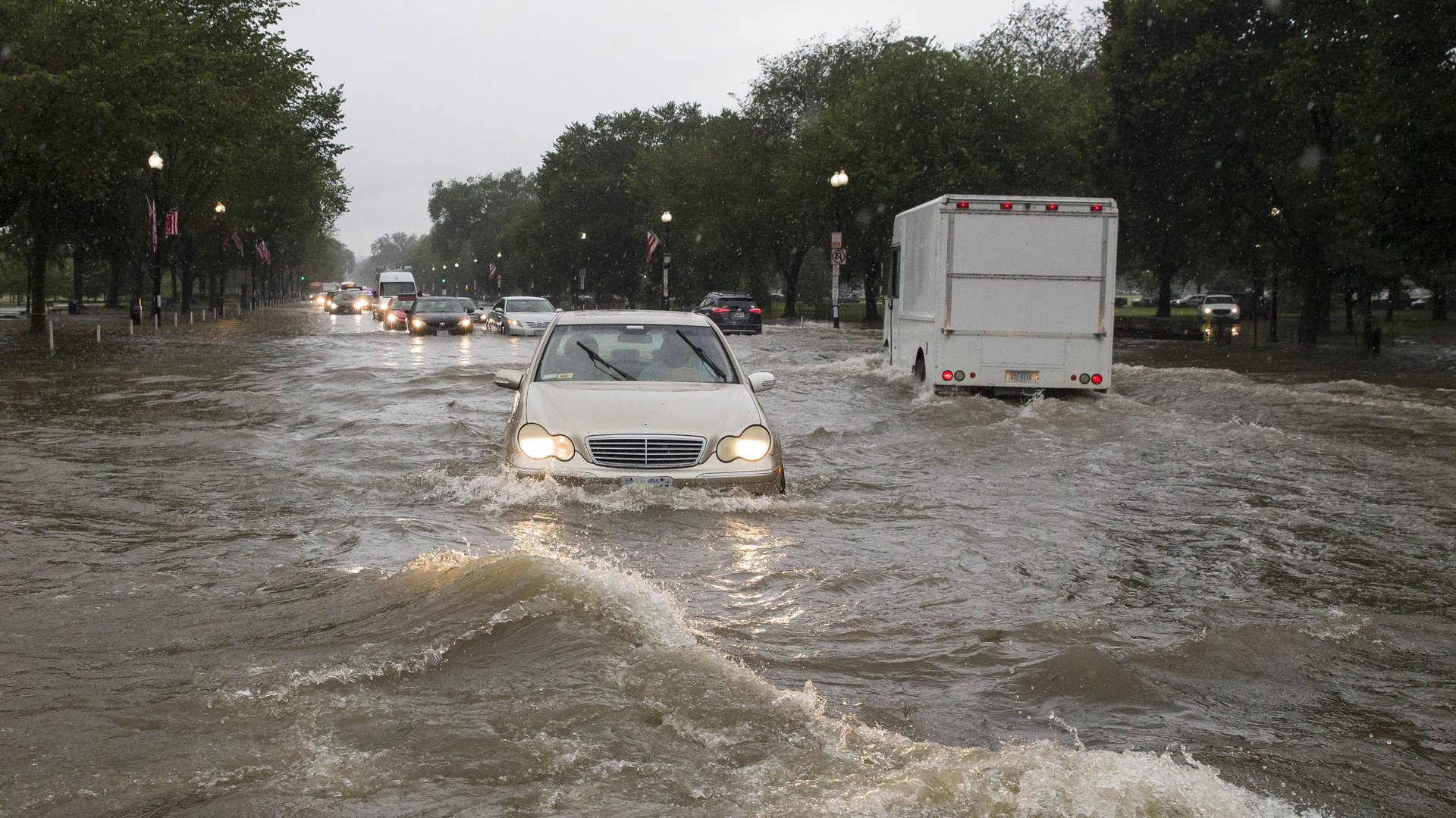Climate change could intensify DC floods, but engineering can help
It was a rough morning commute for many on Monday, July 8, in Washington, DC. Severe flooding ensued after four inches (about 10 cm) of rain fell within an hour in parts of the city—making it one of the area’s top 10 wettest July days ever recorded.


It was a rough morning commute for many on Monday, July 8, in Washington, DC. Severe flooding ensued after four inches (about 10 cm) of rain fell within an hour in parts of the city—making it one of the area’s top 10 wettest July days ever recorded.
Even the basement of the White House briefly flooded, although it was quickly contained.
I’m a DC resident myself, and as I changed out of my sopping wet clothing into dry pants brought to me by a coworker after my ill-advised bike commute, I had to ask myself: Could this extreme flooding be related to climate change?
Any individual weather event is hard to peg to climate change. Flooding, like the kind DC experienced today, is even harder because it’s the result of two separate phenomena. “It has to do with precipitation falling to the ground, but also with the way that water is managed,” Deke Arndt, a climate scientist at the National Oceanic and Atmospheric Administration (NOAA), said at a press briefing in March regarding flooding in the midwest. The way water flows over the ground, called surface hydrology, can determine whether drivers encounter just a little hydroplaning or completely impassable roadways.
Rainfall, the part that is beyond our control, has been on the minds of several meteorologists for the past few months. In June, the US National Oceanic and Atmospheric Administration reported that the 12 months from May 2018 to May 2019 were the wettest on record for the US mainland—especially after an extraordinarily wet spring in the US midwest.
A warming earth can affect precipitation: Scientists agree that hotter air temperatures are better at retaining moisture than colder air temperatures. And preliminary data from NOAA (pdf) suggest that the first months of this year were warmer for DC than the historical normal temperatures in the area.
That said, it’s nearly impossible to tell whether this warm air-water interaction is directly causing more rain. As Quartz reported last September, warmer ocean waters as a result of climate change don’t cause individual storms or hurricanes, but they do add to the storms’ overall severity. The same is the case for the storm earlier today that caused severe flash flooding in the DC-Maryland-Virginia area.
Hydrology, though, is something we can theoretically engineer to avoid flooding—or at least make it less severe.
DC is no stranger to hydrological challenges: It’s a coastal city that was built on flood-prone marshland (not actually a swamp, like a certain US president has threatened to drain). It’s close to sea level—particularly in areas around the National Mall or along the coasts of the Potomac and the Anacostia rivers. The surrounding soil is absorbent, but once it’s fully saturated, rainwater spills over onto less-porous asphalt. Runoff promptly drains into sewers, which spill their contents back into rivers.
Under the Obama administration, the US Environmental Protection Agency published a report on climate change’s effects on the District (pdf). It outlined increased risks of flooding, wind damage, and extreme heat—all of which could be dangerous for the health of people and local fauna.
Although the District has a levee system protect against major weather events, there are concerns that if it fails, much of the city will become part of the Potomac. Last year, DC’s local government committed to updating its resiliency strategy, which includes preparing certain buildings for more flooding, as well as constructing more parks to soak up rain water and avoid situations like today’s.
All things considered, today’s extreme weather event turned out okay: The Washington Post reports that there were no serious injuries or hospitalizations related to the floods, despite the fact that local emergency services received several calls for rescues of stranded individuals. But if these kinds of freak storms happen again and again as global temperatures rise, there’s no guarantee that things will continue to go so smoothly.